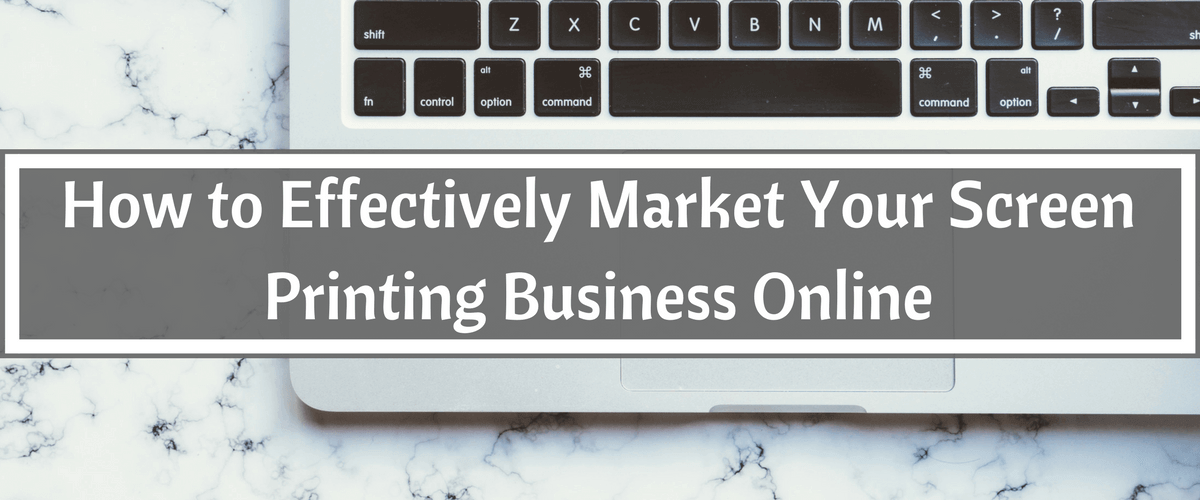No hay productos en el carrito.
es

Revolucionando la industria de la serigrafía a través de tecnología de punta y servicio de calidad
Teléfono: +1 847-367-9760
Anatol Equipment Manufacturing Co.
1429 S Shields Dr
Waukegan, IL 60085

Revolucionando la industria de la serigrafía a través de tecnología de punta y servicio de calidad
Anatol Equipment Manufacturing Co.
1429 S Shields Dr
Waukegan, IL 60085

Make it easy for customers to find your business by creating a unique, cohesive web presence.
In today’s marketing atmosphere, online marketing reigns supreme. This is both good and bad for small business owners. On one hand, online marketing can be an economical way to connect with potential customers, and there are many online marketing tools that can help your business grow. On the other hand, all of the marketing options available can be overwhelming and can leave business owners unsure of where to start.
With a little knowledge and some strategizing, you can run a successful online marketing campaign that helps boost your brand image and connects you with potential customers.
Your website is the cornerstone of your online marketing strategy. Your website provides you with the opportunity to inform potential customers about who you are and what you offer. And all of the other elements of your online marketing campaign will refer potential customers to your website. Your website should be attractive, informative and easy to navigate. Keep in mind that more than 40 percent of website visits are now made from mobile devices, so your website also needs to be mobile responsive.
Of course, the best website won’t serve as a value to your business if no one visits it. That’s where search engine optimization (SEO) comes into play. SEO is a marketing strategy that leads people who are searching for businesses like yours to find your website first.

To improve your website’s search results, you will want to make sure your webpage has clear information on your products and services using words and phrases your potential customers are likely to search for. For years, that meant stuffing webpages with likely search terms, but that can now hurt rather than help your search results. Rather, focus on having quality content that helps potential customers understand what you offer.
Your SEO also can be boosted by enriching your website content. Blogs, FAQs and customer testimonials can help lead customers to you. More and more people are searching in the form of a question — “Where can I get event t-shirts printed,” for example — and you want to be sure that you have content that answers those questions.
Search engines also rank your site based on the depth and quality of your content, so having additional written content, along with properly tagged videos and photos, improves your SEO rankings.
Every business also should be taking advantage of social media marketing. People are using social media to find businesses and to get business recommendations and reviews. Social media also allows you to build your brand voice and brand identity as you connect with existing and potential customers.
Knowing which social media sites to use will take some consideration of your target audience. As nearly everyone is on Facebook, your business should have a Facebook page, but other social media accounts also can drive business. Instagram can help you to create a visual story about your shop, which can be valuable if your target demographic is younger or if your business niche is based in fashion or custom design. LinkedIn, meanwhile, can help you connect with business if your focus is on providing marketing materials for business customers.

What you post also will depend on your demographic, but there are some guidelines. Giving your customers a behind-the-scenes look at what you do, by showing your team at work, posting pictures of your latest projects or introducing your team, is a great way to build relationships. Interactive posts that ask your followers questions can help engage your audience and boost your post rankings. You can post your shop’s latest promotions, but avoid doing this too often, as constant pleas for sales can cost you followers.
Many businesses report that email marketing provides them with the greatest return on investment of all of their marketing efforts. It’s easy to understand why: With email marketing, you target information and offers to the people who are most likely to use your services.
Like social media marketing, your email marketing content will depend on your demographic, but it should be used to provide more information about your products and services, with occasional promotional offers. You can include behind-the-scenes information or short blurbs (linking to your website blog) on information that will be helpful to your potential customers.
If you are ready to promote your screen printing shop with an online marketing campaign, don’t be afraid to get started! As you would with any marketing campaign, establish an objective for your marketing efforts and identify your target consumers, and then plan a strategy that will help you to get your message out to those customers to reach your objectives. An advantage of online marketing is that you can track the success of your efforts, which allows you to evaluate and tweak your marketing plan as you go.
If you start with the basics of creating a solid webpage, establishing a social media presence and creating an email marketing campaign, you will be on your way to successfully marketing your business online. Once you have mastered the basics, you can even venture out into content marketing, pay-per-click advertising, mobile app development and more!
Want some more tips on how to market your screen printing business to attract more customers? Check out these blog posts:
Increase Your Screen Printing Business’s Visibility with Social Media Marketing
Promoting Your Screen Printing Business: The Importance of Traditional Marketing
7 Ways to Grow Your Screen Printing Business
Or download our eBook: A Guide to Successfully Marketing Your Screen Printing Business
Your message was successfully sent!